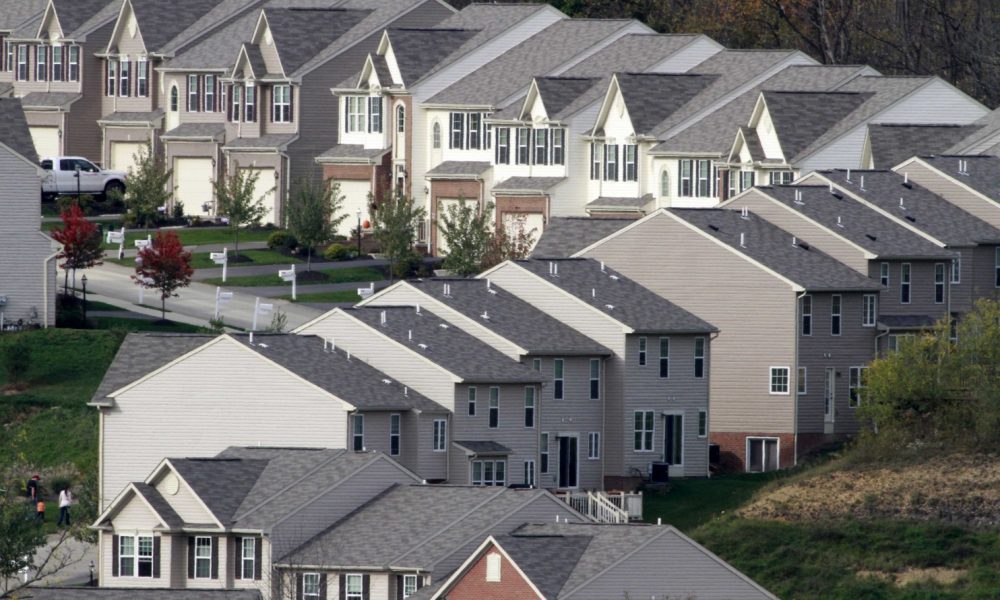2017 housing market forecasts — suburbs are in, low mortgage rates are out
Various real estate entities have weighed in with their prognostications for the 2017 housing market. Most observers expect home sales and prices to moderate in the coming year. They say suburbs will make a comeback while the days of low mortgage rates are over.
Of course, a lot depends on the actions of the new administration. Although President-elect Donald Trump said little about housing during the campaign, some of the issues he highlighted will have an effect on the residential real estate market, such as infrastructure spending, regulatory and tax reform, and immigration policies.
[Mortgage rates move higher for the seventh week in a row]
Below is a roundup of what the experts say buyers, sellers and renters can expect in 2017:
Realtor.com predicts “a year of slowing, yet moderate growth.” The listing service for the National Association of Realtors compiled five housing trends for 2017:
Millennials and boomers will dominate the market. Realtor.com expects these two massive demographic groups to power demand for the next decade.
Midwestern cities will continue to be hotbeds for millennials. According to Realtor.com, millennials are clamoring to live in Madison, Wis.; Columbus, Ohio; Omaha; Des Moines; and Minneapolis.
Slowing price appreciation. Realtor.com forecasts home prices will grow at 3.9 percent annually, compared to an estimated 4.9 percent in 2016.
Fewer homes on the market and fast-moving markets. Inventory is down an average 11 percent in the top 100 metro markets, and it is not expected to improve next year. Homes are selling 14 percent faster.
Western cities will continue to lead the nation in prices and sales. Realtor.com predicts prices to increase 5.8 percent and sales to increase 4.7 percent in this region.
[More homes sold in the D.C. area last month than any November in the past seven years]
One prediction you can always count on: No matter what’s happening with the economy, NAR is always going to say it’s a great time to buy. Its fourth quarter Housing Opportunities and Market Experience surveyfound that 70 percent of people say now is a good time to buy a home. NAR also predicts the rate on a 30-year fixed mortgage will rise to 4.6 percent by the end of 2017.
Zillow says the homeownership rate will bounce back even as renting becomes more affordable. The real estate data firm also sees a reversal of a recent trend, predicting that “more Americans will drive in from the affordable suburbs for work, despite urban development efforts.” Its seven predictions are:
Cities will focus on denser development.
More millennials will become homeowners.
Rental affordability will improve.
Buyers of newly built homes will have to spend more to cover rising costs of construction.
The percentage of people who drive to work will rise for the first time in a decade as homeowners move farther into the suburbs seeking affordable housing.
Home values will grow 3.6 percent.
“Those looking for more affordable housing options will be pushed to areas farther away from good transit options, in turn leading more Americans to drive to work,” said Svenja Gudell, Zillow chief economist. “Renters should have an easier time in 2017. Income growth and slowing rent appreciation will combine to make renting more affordable than it has been for the past two years.”
Redfin predicts “strong buyer interest, better access to credit and a modest and much needed increase in inventory will allow home sales to grow but not as much in 2016.” The national real estate brokerage madesix predictions:
The housing market will continue to grow but at a slower pace. Redfin expects median home sale prices to rise 5.3 percent annually in 2017 compared to 5.5 percent this year and existing home sales to increase 2.8 percent annually in 2017 compared to 3.4 percent last year. Although Redfin predicts inventory will be up slightly, it noted that “because we haven’t seen any increase in supply in the most affordable third of the housing market in more than eight months, we expect most of next year’s increase to be in the most expensive third of the market.”
2017 will be the fastest real estate market on record. Homes stayed on the market an average of 52 days this year, according to Redfin. It expects them to sell even faster in 2017.
New-construction growth will slow. Construction is “much lower than historical averages due largely to labor shortages. Given that nearly one in four construction workers are foreign-born, stricter immigration policies from the Trump administration are likely to make the problem worse.”
Mortgage rates will increase but not too much. Redfin expects mortgage rates to rise but no higher than 4.3 percent on the 30-year fixed rate next year.
More people will have access to home loans. Next year, Fannie Mae and Freddie Mac will raise its loan limits for the first time since 2006, increasing them to $424,100 for most of the country and to $636,150 for more expensive markets. “This change makes it easier for more homebuyers to qualify for a mortgage in high-priced markets,” Redfin said.
Millennials will move to second tier-cities. According to Redfin, among the places millennials are looking to buy are Raleigh, N.C.; Austin; and North Port, Fla.
The Mortgage Bankers Association predicts mortgage rates will rise slightly but remain low, purchase applications will increase and refinance applications will decrease.
“Strong household formation coupled with further job growth, rising wages and continuing home price appreciation will drive strong growth in purchase originations in the coming years,” said Mike Fratantoni, MBA’s chief economist.
MBA expects rates on the 30-year fixed rate mortgage to remain below 5 percent through the end of 2018.
“Historically low and, in some cases, negative rates around the world continue to put downward pressure on long-term U.S. [bond] rates, keeping them lower than the domestic growth environment would otherwise warrant,” Fratantoni said.
Many times over the past few years the refinance boom has been declared over only to have world events conspire to revive it. Although he adds a caveat to his expectation, Fratantoni said he expects fewer refinances in the coming year.
“The world is an uncertain place, and there is always a chance that rates could drop again in response to global turmoil,” Fratantoni said. “But we expect that refinance volume will most likely be much lower over the next few years as homeowners have repeatedly had the opportunity to lower their rates, and there will be fewer households with an incentive to refinance if rates follow the path we are projecting.”
SOURCE: https://www.washingtonpost.com/news/where-we-live/wp/2016/12/19/2017-housing-market-forecasts-suburbs-are-in-low-mortgage-rates-are-out/

